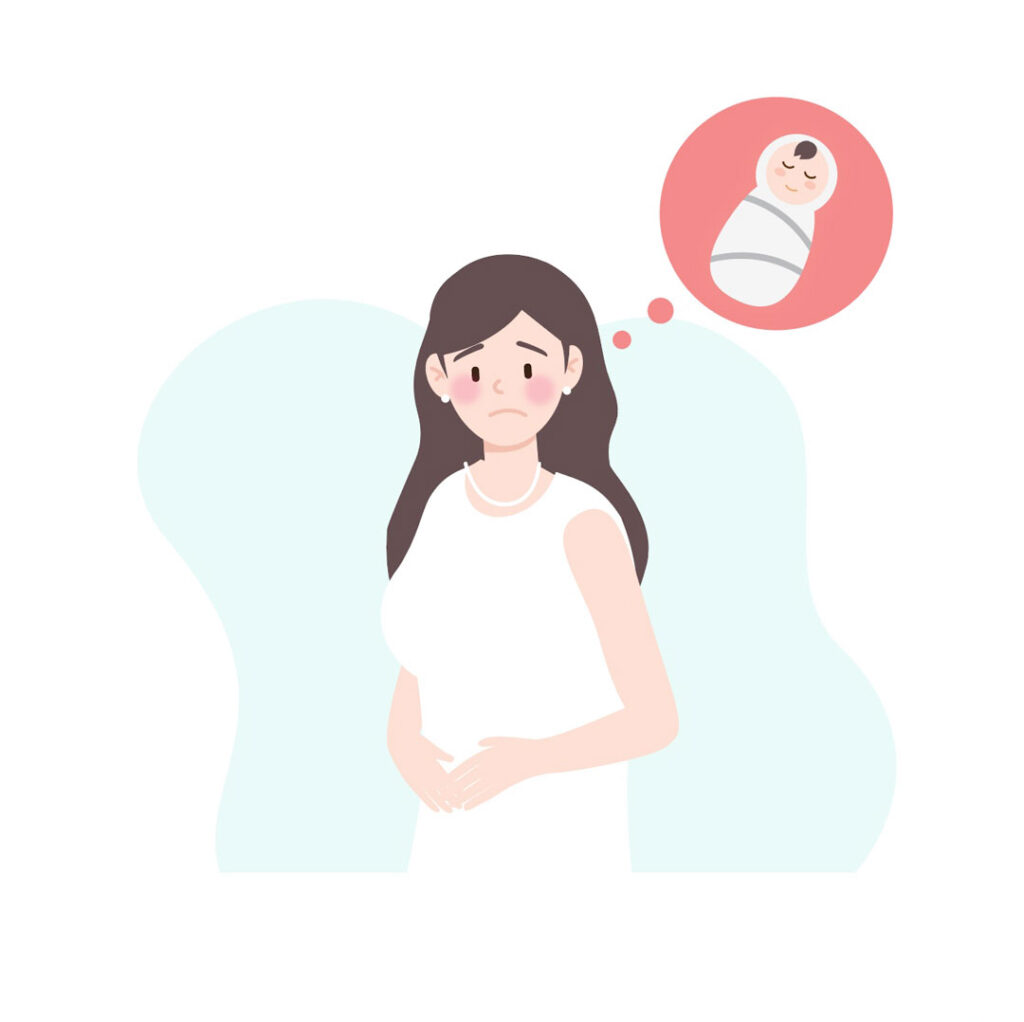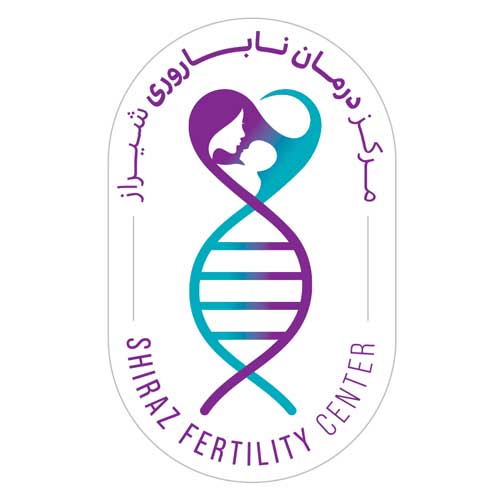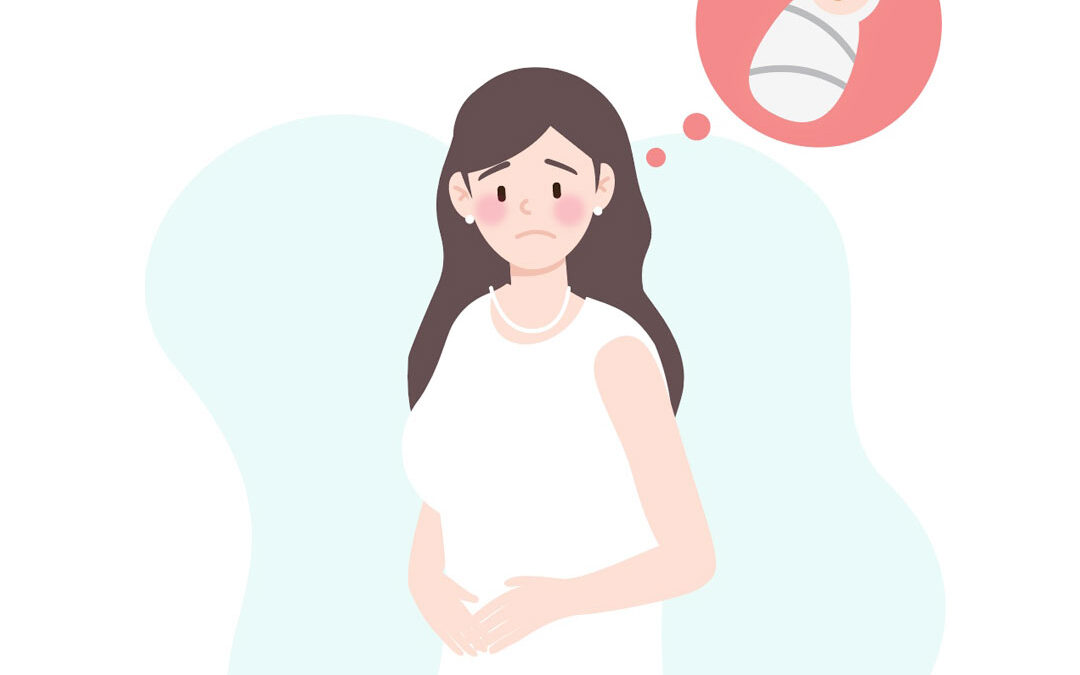Appointment Request

Causes of male infertility
Causes of female infertility
Infertility in women can occur due to an underlying disease that has damaged the fallopian tubes, ovulation disorders, hormonal imbalance, pelvic inflammatory disease, endometriosis, polycystic ovary syndrome, premature ovarian failure, uterine fibroids, environmental factors, and age-related factors. In general, the most common causes of infertility in women include: ovulation disorders (35%), endometriosis (15%), blocked fallopian tubes and pelvic adhesions (35%), congenital or acquired defects of the uterus and cervix (6-5%), and hyperprolactinemia (10%). The incidence of infertility increases with age.
A study conducted in Iran in 2015 found the overall prevalence of primary infertility among couples to be 17.3%. The distribution of infertility causes was as follows: ovulation disorders (39.7%), fallopian tube disorders (3.7%), male factors (29.1%), unexplained factors (14.4%), endometriosis (8.2%), and other factors (4.7%). This study indicated that ovulation disorders were the primary cause of primary infertility in Iran, primarily due to the advanced age of women at marriage.

1. Ovarian dysfunction
Infertility arising from ovarian dysfunction can occur as a result of the depletion of eggs from the ovaries or from functional failure of the ovaries.
Primary Ovarian Insufficiency (POI) is characterized by amenorrhea (absence of menstruation) and hypergonadotropic hypogonadism before the age of 40. It affects approximately 1% of women under 40. POI is a heterogeneous disorder with diverse causes and phenotypes. This insufficiency leads to secondary amenorrhea after the completion of puberty, but it can also occur at any time before menarche. In such cases, the differentiation from gonadal dysgenesis is based on morphology and histology. In other words, instead of being in the form of strip-like gonads, the ovaries will closely resemble those of postmenopausal women.
Known causes of POI include chromosomal number and structural abnormalities, fragile X mutations, autoimmune disorders, radiation therapy, and chemotherapy.
The underlying pathophysiology in these cases is galactosemia and accelerated follicular atresia. Generally, the chance of pregnancy after a diagnosis of POI is about 5-10%. Some women with POI do become pregnant, and approximately 8% of these pregnancies result in live births. However, oocyte donation and in vitro fertilization (IVF) can increase the chances of pregnancy in these women.
There is a low possibility of intermittent ovulation in women with POI (similar to women nearing menopause). By taking blood samples periodically and using transvaginal ultrasound, developing follicles can be observed. However, disrupted patterns of folliculogenesis are frequent, and premature luteinization (likely a consequence of increased LH levels) is commonly seen. Physiological treatment with exogenous estrogen can be helpful. However, in general, these individuals are not good candidates for ovulation induction and it is better to use donor eggs in IVF cycles.
Chronic anovulation
Chronic anovulation is one of the most common causes of infertility. Clinical manifestations include amenorrhea (absence of menstruation), irregular uterine bleeding, and hirsutism (excessive hair growth). This condition is associated with serious complications such as infertility, increased risk of endometrial hyperplasia and neoplasia, insulin resistance, and an increased risk of diabetes mellitus and cardiovascular disease. It also carries the risk of premature osteoporosis in cases of hypogonadism. Although the cause of anovulation in women with ovarian insufficiency can be pituitary tumors, eating disorders, hyperprolactinemia, or obesity, in most cases, diagnosing the specific mechanism is difficult.
In cases of amenorrhea or menstrual disorders, the causes can be attributed to central defects, ovarian failure, and dysfunctions of the hypothalamus-pituitary-ovarian axis:
1. In central defects, due to the insufficiency or suppression of the hypothalamus or pituitary gland, hypogonadotropic hypogonadism occurs.
2. In ovarian failure, due to follicular depletion and the ovary’s inability to respond to gonadotropin stimulation, hypergonadotropic hypogonadism occurs.
3. In the dysfunction of the hypothalamus-pituitary-ovarian axis, asynchronous production of gonadotropin and estrogen occurs, leading to a wide range of clinical manifestations. Depending on the degree of ovarian function, it can result in amenorrhea, hirsutism, irregular uterine bleeding, hyperplasia, endometrial cancer, and infertility.
Polycystic ovary syndrome (PCOS)
PCOS is the most common cause of chronic anovulation (lack of ovulation). It occurs in approximately 10% of women of reproductive age. Multiple mechanisms contribute to the pathophysiology of anovulation in PCOS. The Rotterdam criteria are used to diagnose PCOS, requiring the presence of two out of the following three criteria:
1. Clinical or biochemical evidence of increased androgen levels
2. Infrequent or absent ovulation
3. An ultrasound examination of the ovaries reveals more than 12 follicles in each ovary, measuring 2-9 millimeters, or an increase in ovarian volume exceeding 10 cubic millimeters. Clinical symptoms predominantly include menstrual irregularities, secondary amenorrhea, hormonal imbalances, hirsutism, acne, obesity, and infertility. It is often associated with insulin resistance, hyperandrogenism, inflammation, and oxidative stress.
In women with PCOS, compared to women with normal menstruation, higher levels of serum LH, normal FSH levels, and an increased LH-to-FSH ratio are observed. Approximately 35% of women with PCOS have impaired glucose tolerance, and about 10% meet the criteria for type 2 diabetes. Hyperandrogenism is a primary characteristic of PCOS, primarily due to the excessive production of androgens in the ovaries (and to a lesser extent in the adrenal glands). Increased serum LH and insulin levels are the main mechanisms for increased androgen production in the ovaries.
Other mechanisms include: increased ovarian stroma volume, insulin sensitivity, and LH sensitivity. This disease is a type of polygenic disorder influenced by both genetic and environmental factors. In women with PCOS, there is also a decrease in egg quality and impaired embryo implantation. Infertile women with anovulation who desire pregnancy are candidates for ovulation induction. The first-line treatment for these patients is clomiphene, and if there is no response, metformin, combined therapy of metformin and clomiphene, exogenous gonadotropins, and laparoscopic ovarian drilling are other treatment options.
2. Tubal Factors and Infertility
Tubal diseases and pelvic adhesions prevent the normal transport of the egg and sperm in the fallopian tube. The most important tubal and peritoneal factors in infertility are endometriosis, pelvic adhesions, and pelvic inflammatory disease.
Pelvic Inflammatory Disease (PID)
These include infections of the pelvic organs by a series of pathogens such as chlamydia or gonorrhea, adhesions from previous surgery, inflammatory conditions of parts of the gastrointestinal tract (appendicitis, inflammatory bowel disease), and salpingitis resulting from septic abortion or ascending infection. PID can lead to damage to the fallopian tubes due to abscess, adhesions, scarring, and blockage, ultimately resulting in ectopic pregnancy and infertility. The primary cause of infertility with a tubal factor is pelvic inflammatory disease, often caused by chlamydia or gonorrhea. Although many women with tubal disease or pelvic adhesions have no known history of infection, a latent infection is the most likely cause in these cases.
Blockage of the proximal portion of the fallopian tube prevents sperm from reaching the distal portion of the fallopian tube (where fertilization normally occurs). Blockage of the distal portion of the fallopian tube prevents the pickup of the ovum from the adjacent ovary. Distal tubal obstruction disease includes a spectrum from mild, moderate, to severe or complete obstruction, and the ability of the ovum to enter the tube is inversely related to the severity of the disease. Inflammatory damage to the inner mucosal structure of the tube is not easily detected and can impair the transport of sperm or the embryo.
Another tubal factor contributing to infertility is a history of tubal ligation (tubectomy). Approximately one million women in the United States undergo tubectomy each year, with about 7% later regretting the procedure and 1% seeking reversal.
The prognosis for successful pregnancy leading to live birth after tubal reversal depends on the woman’s age, the type and location of the original surgery, and the final length of the repaired fallopian tube. Among all surgical treatments for tubal factor infertility, tubal reversal has the highest post-operative fertility rate.
Women who desire more than one pregnancy and have no other fertility factors are the best candidates for this procedure.
Endometriosis
Another cause of infertility is tubal factors. Endometriosis is a benign disease characterized by the presence of endometrial glands and stroma outside the uterus, associated with pelvic pain and infertility. The ectopic endometrial tissue is usually located within the pelvis, but may also be present outside the pelvis. Endometriosis is classified as follows:
– Minimal Endometriosis: Isolated and superficial endometrial tissue on the peritoneum without severe adhesions.
– Mild Endometriosis: Widespread superficial endometriosis on the peritoneum and ovaries, less than 5 centimeters in size, without severe adhesions
– Moderate Endometriosis: Superficial and deep endometrial lesions in multiple locations, with possible adhesions of the fallopian tubes or ovaries
– Severe Endometriosis: Multiple deep and superficial endometrial lesions, including large endometriomas in the ovaries. Severe adhesions of the fallopian tubes, ovaries, and the pouch of Douglas
The overall prevalence of endometriosis in women of reproductive age is approximately 3-10%. Endometriosis has a strong association with infertility, affecting about 20-40% of infertile women. In patients with severe endometriosis, the monthly fertilization rate is significantly reduced. Overall, the success rate of IVF in women with endometriosis is approximately half that of women with tubal disease.
In summary, endometriosis reduces fertility, and the extent of this reduction is correlated with the severity of the disease. This reduction is attributed to two main mechanisms:
1.Anatomical abnormalities of the adnexa (fallopian tubes and ovaries) that prevent the pickup of the egg at the time of ovulation or inhibit ovulation.
2.Overproduction of prostaglandins, metalloproteinases, cytokines, and chemokines which lead to chronic inflammation, impairing ovarian, fallopian tube, or endometrial function and causing disturbances in folliculogenesis, fertilization, and implantation.
3. Uterine factors and infertility
Uterine Factors and Infertility
Uterine disorders are relatively uncommon causes of infertility. Even if they do not directly cause fertility problems, they can have adverse effects on pregnancy outcomes. Impaired implantation, due to mechanical factors and reduced receptivity of the uterus, is the basis of uterine-related infertility. Uterine abnormalities can be one of the causes of miscarriage in women with recurrent miscarriages. Uterine abnormalities such as abnormal shape of the uterine body and endometrium, polyps, fibroids (leiomyomas), and Asherman’s syndrome are uterine factors in infertility.
Unicornuate uterus
It arises from the incomplete development of one of the Müllerian ducts. Most unicornuate uteri have no connection to the horn on the opposite side, and in some cases, the cavity of the opposite uterus is functional. Therefore, to reduce the risk of ectopic pregnancy, this uterine cavity should be removed. Approximately 40% of unicornuate uteri are associated with agenesis of the kidney on the same side.
Bicornuate uterus: This occurs due to the incomplete fusion of the Müllerian ducts, resulting in each duct developing into a cervix and half of the uterus. The fertility outcomes in women with a bicornuate uterus are slightly better than those with a unicornuate uterus, possibly due to better blood flow between the two connected horns. Approximately 40% of pregnancies in women with a bicornuate uterus end in spontaneous abortion.
Didelphys uterus: This results from incomplete fusion of the Müllerian ducts at the fundal level and has two separate uterine cavities with a common lower segment and a single cervix. On the external surface of the uterus, there is a cleft in the midline, the depth of which varies depending on the severity of the fusion abnormality. The didelphys uterus has the highest incidence of cervical insufficiency among congenital uterine anomalies.
Septum uterus
Uterine septum is formed due to the incomplete absorption of the internal septum that separates the two halves of the uterus. A septate uterus is the most common developmental abnormality of the uterus. This abnormality is most strongly associated with poor pregnancy outcomes, with a miscarriage rate of about 65% associated with septate uteri.
Endometrial polyps are hyperplastic growths of the endometrial lining that have a vascular center and may be pedunculated or sessile, protruding into the uterine cavity. Polyps are generally rare in young women and their incidence increases with age. The overall prevalence of polyps in infertile women is 3-10%. Endometrial hyperplasia, increased endometrial aromatase expression, and gene mutations are the proposed molecular mechanisms in the pathogenesis of polyps. The finding that polyps are resistant to the effects of progesterone suggests that polyps may interfere with implantation. Local inflammatory changes or alterations in the shape of the uterine cavity, caused by polyps, may also be involved.
Chronic endometritis
Chronic endometritis is a common cause of unexplained infertility. It is relatively common in women with symptomatic lower genital tract infections (including cervicitis and recurrent bacterial vaginosis) and may even be present in asymptomatic fertile women. Chlamydia trachomatis and Mycoplasma are associated with chronic endometritis, and chronic endometritis likely plays a role in the pathogenesis of infertility due to tubal factors.
Uterine leiomyomas (uterine fibroids)
Uterine fibroids are benign tumors of the smooth muscle of the uterus. The prevalence of fibroids in women of reproductive age is approximately 20-40%, and in infertile women, it is about 5-10%. Fibroids can lead to heavy menstrual bleeding and infertility. The development of uterine fibroids is common in women in their 30s. Large fibroids can cause infertility through the following mechanisms:
– Altered cervical position and reduced sperm contact
– Obstruction of the isthmic region of the fallopian tubes
– Anatomical changes in the adnexa, interfering with ovum pick-up
– Altered uterine cavity shape and increased abnormal myometrial contractions, interfering with sperm or embryo transport within the uterus
– Impaired uterine blood flow and chronic endometritis, interfering with implantation
Impact of Uterine Fibroids on In Vitro Fertilization (IVF) Outcomes in Infertile Women
Data from studies investigating the effects of uterine fibroids on the outcomes of in vitro fertilization (IVF) in infertile women indicate that submucosal fibroids have a negative impact on pregnancy rates and implantation. However, subserosal or intramural fibroids with a size less than 5-7 centimeters do not have a negative impact on these pregnancy outcomes. Overall, submucosal fibroids can reduce the success rate of IVF by up to 70%, and multiple intramural fibroids larger than 5 centimeters can reduce this rate by up to 30%.
Subserosal fibroids do not have a negative impact on IVF outcomes. Submucosal fibroids increase the risk of miscarriage after a successful IVF by up to three times, while intramural fibroids increase this risk by about 50%. When making clinical decisions about asymptomatic intramural fibroids, it is necessary to consider the size, number, and location of the fibroids, the risks and benefits of surgery, the patient’s age, duration of infertility, ovarian reserve status, other infertility factors, and the necessary treatments.
Intrauterine Adhesions (Asherman’s Syndrome)
This syndrome can develop following any severe injury that causes the destruction or damage of the endometrium. These adhesions cause the obstruction or obliteration of the uterine cavity. A pregnant uterus has a particular vulnerability to injury. Inflammation or infection can also create a conducive environment for the development of adhesions. In 90% of cases, intrauterine adhesions occur due to aggressive curettages following missed abortion, incomplete abortion, or during the removal of retained products of conception.
These adhesions can also form after abdominal or hysteroscopic myomectomy or uterine surgeries such as septum removal. Genital tuberculosis and schistosomiasis are also causes of intrauterine adhesions. Adhesions may be asymptomatic or cause amenorrhea, hypomenorrhea, dysmenorrhea, recurrent miscarriage, and infertility. The mechanisms by which intrauterine adhesions can cause recurrent miscarriages include reduced functional volume of the uterus, fibrosis, and endometrial inflammation, which may predispose to placental insufficiency. Pregnancy outcomes in women with intrauterine adhesions are generally poor, but most of these outcomes improve after removal of the adhesions.
Diethylstilbestrol (DES)
Women who were exposed to diethylstilbestrol (DES) in utero have an increased risk of adverse pregnancy outcomes. The risk of spontaneous abortion is doubled, and the risk of ectopic pregnancy is increased ninefold. Structural changes in the collagen content of the cervix may predispose these women to cervical insufficiency.
4. Luteal Phase Defect (LPD)
It refers to a disorder in the function of the corpus luteum of the ovary that leads to insufficient production of progesterone, which is necessary for preparing the endometrium for embryo implantation. Although progesterone is crucial for the implantation process and early embryonic development, Luteal Phase Defect (LPD) is not yet considered an independent factor in causing infertility.
5. Cervical Factor and Infertility
Cervical mucus plays a crucial role in fertility. In approximately 6% of infertile couples, cervical factors contribute to infertility. As ovulation approaches and estrogen levels rise mid-cycle, cervical mucus becomes watery, clear, and abundant. After ovulation, the cervical mucus becomes thicker, more viscous, and cloudy. Cervical mucus serves to collect sperm from the vagina, remove seminal plasma, and facilitate the passage of sperm through the cervix and into the fallopian tubes.
Women with hypoestrogenism have little or no clear cervical mucus. In contrast, patients with PCOS who do not ovulate exhibit an estrogenic pattern throughout their cycle. Genital infections can limit the evaluation of this mucus in determining ovulation.
In the past, the post-coital test was considered one of the methods for diagnosing infertility. In this test, the clarity, elasticity, and stickiness of cervical mucus (Spinnbarkeit), its fern-like appearance on a microscope slide (Ferning Test), and the number and motility of live sperm on the slide after intercourse were evaluated.
Today, cervical mucus abnormalities or sperm-cervical mucus interactions are rarely considered the sole or primary cause of infertility. In cases of cervicitis or a history of cervical intraepithelial neoplasia (CIN) treatment (cryotherapy, clomiphene citrate), the quality of cervical mucus is reduced. Chronic cervicitis or cervical stenosis, which can result from previous conization or other cervical treatments, can also disrupt sperm-cervical mucus interactions.
Treating cervical factors is often challenging. Intrauterine insemination (IUI) is considered the best treatment option in these cases, with a success rate of approximately 10-18%. GIFT and IVF are other treatment options for infertility with cervical factors.
6. Immune Factors and Infertility
Sometimes, ovarian insufficiency is a consequence of autoimmune diseases. In women with premature ovarian failure (POF), the prevalence of autoimmune thyroid disorders, Addison’s disease, type 1 diabetes, and myasthenia gravis is higher than in the general population, but there is no direct or convincing evidence of a causal relationship. Premature ovarian failure also occurs in women with systemic lupus erythematosus. Addison’s disease, which is an autoimmune insufficiency of the adrenal cortex, has a strong association with POF. The main characteristic of autoimmune oophoritis (ovarian inflammation) is lymphocytic infiltration surrounding the antral and secondary follicles.
Numerous studies have demonstrated the presence of antibodies against egg cells and granulosa cells in cases of premature ovarian failure (POF). Autoimmune ovarian failure can occur as part of a specific autoimmune polyendocrine syndrome (which also includes adrenal insufficiency). Women with POF should be screened for anti-adrenal antibodies (anti-21-hydroxylase antibodies), anti-thyroid antibodies (anti-peroxidase and anti-thyroglobulin antibodies), and glucose tolerance testing. Women with certain autoimmune diseases are at an increased risk of implantation failure and infertility.
Antiphospholipid Syndrome (APS)
The presence of antiphospholipid antibodies is an autoimmune disorder that is clinically associated with recurrent venous or arterial thrombosis. It commonly affects implantation, placentation, and early fetal development, leading to miscarriage. There is evidence from animal models and clinical studies in infertility that suggests antiphospholipid antibodies play a role in infertility, although large-scale meta-analyses have not confirmed this.
Celiac Disease
This disease is an inherited inflammatory autoimmune disorder of the intestine. In these patients, the consumption of gluten triggers the immune system and destroys the villi of the small intestine. Untreated celiac disease in women may lead to increased fertility problems, including infertility, miscarriage, and restricted intrauterine growth.
7. Genetic Factors and Infertility
Genetic factors play a significant role in many fertility-threatening diseases, including endometriosis, uterine fibroids, age at menarche, and menopause. The prevalence of chromosomal abnormalities is higher in infertile couples compared to the general population. Some of these abnormalities include:
Gonadal Dysgenesis (Streak Gonads)
This abnormality results from incomplete gonad formation due to a disruption in the migration or organization of germ cells. This can occur as a result of abnormalities in a number of sex chromosomes, mutations in genes that form the urogenital ridges, and the differentiation of the sex gonads. Approximately 25% of affected individuals have a normal 46XX karyotype and may carry a more subtle disorder involving one or more genes essential for normal ovarian function located on the X chromosome. Gonadal dysgenesis is one of the most common causes of primary amenorrhea. Due to the absence of ovarian follicles or their rapid depletion during fetal life or in the first few years of life, the gonads only contain stroma and appear as fibrous bands. The most common form of gonadal dysgenesis is Turner syndrome.
Turner Syndrome
The most common aneuploidy associated with infertility is Turner syndrome. Classically, Turner syndrome is characterized by a 45,X karyotype, but it can also be associated with a variety of other chromosomal abnormalities (deletions, ring chromosomes, and isochromosomes). The structure and composition of the X chromosome are important. Patients with deletions in the short arm of the X chromosome have short stature and congenital abnormalities, while those with deletions in the long arm of the X chromosome have only gonadal dysgenesis. Most women with Turner syndrome (95-98%) are infertile due to gonadal dysgenesis, which is caused by the loss of oocytes from week 18 of pregnancy or up to several months (or even years) after birth. In most 45,X patients, oocyte loss occurs at the prophase stage of meiosis (pachytene).
In individuals with Turner syndrome who have a mosaic karyotype, the ovaries may show limited activity during puberty. This means there may be a few developing follicles, and some signs of sexual maturity can appear. In very rare cases, spontaneous menstruation and even pregnancy can occur. However, even in these rare instances, premature menopause is common.
For girls with Turner syndrome, it is essential to evaluate ovarian function and consider freezing immature follicles (primordial follicles) before puberty as a form of fertility preservation. Due to the increased incidence of heart abnormalities and changes in the cardiovascular system in these patients, pregnancy carries significant risks. The risk of death during pregnancy can be up to 100 times higher, primarily due to complications from aortic dissection.
If these women opt for donor egg IVF, their pregnancy rates can be similar to those of other women. Given the shorter stature of women with Turner syndrome, only one or two embryos should be transferred during each IVF cycle to prevent multiple pregnancies.
If pregnancy occurs, there is a higher risk of miscarriage and chromosomal abnormalities in the offspring. Pregnancy rates with donor eggs are approximately 24-47%, but even in these pregnancies, the risk of miscarriage remains elevated due to underlying uterine factors.
Soveier syndrome
This is a type of gonadal dysgenesis characterized by a 46XY karyotype. Due to the lack of androgen and AMH production by the dysgenetic gonads, these patients present with a female phenotype. In at least 10-15% of cases, the cause is a mutation in the SRY gene (the sex-determining region on the short arm of the Y chromosome). Mutations in genes such as WT1, SOX9, and SF1 have also been implicated.
Patients with Swyer syndrome suffer from hypergonadotropic hypogonadism, primary amenorrhea, and delayed puberty. Pregnancy is possible through in vitro fertilization (IVF) with a donor egg and is not associated with any particular risks or complications.
46XX Gonadal Dysgenesis
Some individuals with primary amenorrhea and gonadal dysgenesis have a normal 46XX karyotype, suggesting that autosomal genes also play a role in ovarian differentiation.
8. Unexplained Infertility
In some cases, a comprehensive initial evaluation fails to identify a cause for infertility. Unexplained infertility is a diagnosis made after ruling out other causes, such as normal semen analysis, normal ovarian function, a normal uterine cavity, and patent fallopian tubes. There may be a specific cause that is not detectable with current diagnostic tests. The prevalence of unexplained infertility in infertile populations ranges from 10-20%, depending on diagnostic criteria.
Most cases of unexplained infertility are associated with increasing age, being more common in women over 35 years old. The most likely cause is related to the quality of sex cells or a disturbance in the implantation process, for which no reliable test has yet been identified.
9. Sexually Transmitted Diseases (STDs) and Infertility
Sexually transmitted diseases (STDs) are infections that are passed from one person to another through sexual contact. These infections are caused by viruses, bacteria, or parasites. STDs can lead to infertility. Often, STDs have no symptoms. Some well-known STDs include syphilis, trichomoniasis, chancroid, chlamydia, gonorrhea, herpes simplex virus, human papillomavirus (HPV), HIV, and lymphogranuloma venereum. While some STDs can be treated, others cannot. STDs can be transmitted vertically from a mother to her fetus or newborn during pregnancy and childbirth.One of the most significant STDs is chlamydia. In many cases, chlamydia causes very few symptoms in the genital area, but it can lead to infection and blockage of the fallopian tubes, resulting in infertility.
10. Structural Blockages of the Reproductive Tract and Infertility
Congenital anomalies affecting the genital tract can lead to infertility, including imperforate hymen, vaginal transverse septum, and Mullerian duct agenesis or hypoplasia. In Mullerian agenesis, the vagina and/or uterus fail to develop. The only disorders of the genital outflow tract associated with normal anatomy include cervical stenosis, intrauterine adhesions (Asherman’s syndrome), and other endometrial damage resulting from surgical trauma or infection. Structural obstruction can occur following pelvic, uterine, or abdominal surgeries, infections, and adhesions, which can restrict the movement of the ovaries and fallopian tubes and lead to infertility.
11. Chemotherapy and Infertility
Chemotherapy, depending on the type and dosage of the drug used, can deplete the primordial follicle pool in the ovaries, and is a relatively common cause of POI. Levels of inhibin B and anti-Müllerian hormone also decrease following chemotherapy, while FSH increases. The risk of ovarian failure after chemotherapy depends on the patient’s age, as the remaining volume of the follicular reserve decreases progressively with increasing age, and the damage caused by treatment also increases proportionally. Cyclophosphamide and busulphan are among the chemotherapy drugs with a high risk of causing infertility.
Source: Clinical Approaches to Infertility in Reproductive Biology
Also read:



